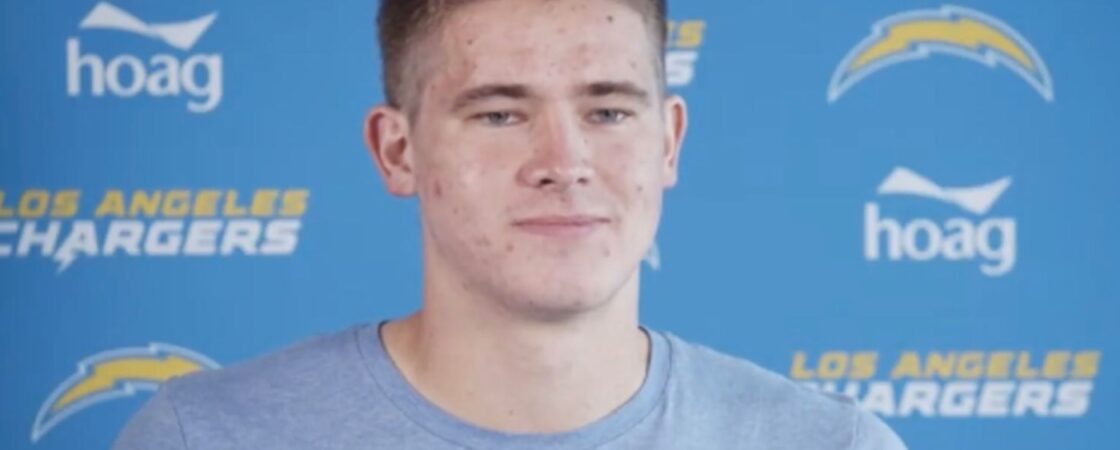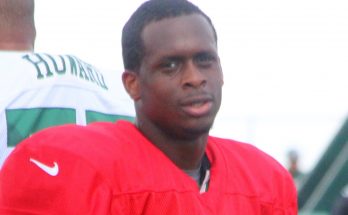The Los Angeles Chargers should have been in the playoffs, but the Raiders denied us glory by kicking a field goal at the end of overtime to defeat the Chargers. Had they both tied, they would have both made the playoffs, and spared us watching Ben Roethlisberger and the Steelers get blown out by the Chiefs so bad that the Chiefs ran out of touchdown fireworks. Literally. But, not all was lost from the 2021 Los Angeles Chargers’ season; so what should we remember about them headed into our 2022 fantasy football drafts?
- Going into the 2021 fantasy football season, a lot of people (not me, mind you) had a lot of bad things to say about Austin Ekeler as a fantasy football RB1. He finished the year as the RB2 in overall scoring, despite missing a game, and his 21.4 fantasy points per game (PPR) would have been top-four in each of the last three seasons. So, what changed? The short answer? Touchdowns. He finished the year with 20 touchdowns in 16 games, after scoring 20 touchdowns in his 40 previous games combined. That wasn’t luck, either. He had 16 rush attempts and one target inside the five-yard line, which he turned into ten touchdowns. In 2020, he touched the ball three times inside the three-yard line. That’s it, that’s the fact. It’s crazy what happens when you use a player properly.
- Speaking of “it’s crazy what happens when you use a player properly,” let’s talk about Mike Williams and his 2021 season usage. In the first five weeks of the season, Mike Williams was a very productive fantasy football asset; he also finished as a top-15 wide receiver four times in those first five games (and finished top-15 just twice the rest of the season). The reason wasn’t air yards, as I thought (he averaged about 10.8 yards downfield per target), and it wasn’t red zone targets, either (he had an evenly-distributed 15 RZ targets): it wasn’t catch rate, either (both around 60% before and after the split). It was just one basic thing: target volume. In the first five games of the season, Mike Williams averaged 10 targets per game and averaged just 7 targets per game the rest of the year. Sometimes the answer is as simple as it seems.
- The remarkable thing to remember about Keenan Allen’s 2021 is how unremarkable it really was, at least compared to what we’ve come to expect from him. He finished the year with 1,138 receiving yards, 106 receptions, and 6 touchdowns in sixteen games. In the four seasons prior, he averaged 1,234 receiving yards, 104 receptions, and 6.5 touchdowns per sixteen games. He is the fourth player to have a streak of at least five years where he had 90+ catches, 900+ yards, and 6+ touchdowns in all five seasons. If you remove the touchdown, he’s just the fifth player to reach those milestones in five-straight years.
- If you remember one thing about the 2021 Los Angeles Chargers, it’s probably Brandon Staley’s predilection for trusting the math and going for it on fourth down… a lot. The Chargers had 34 fourth down attempts and converted 22 of them. This marks the fourth-best fourth-down conversion rate in the league and the third-most attempts in the league. But, when you consider the options on fourth down: punt, field goal, or go for it, the Chargers had the highest attempt rate in the league at 31%. Only three teams were above 25%: The Chargers, Lions, and Bears.
- Now that we’ve talked about everything with the Chargers, let’s talk about the straw that stirs the drink: Justin Herbert. Herbert finished the year with 5,014 passing yards, 38 touchdowns, 15 picks, and 63 rushes for 302 yards and 3 touchdowns. This was a massive step forward for the Sophomore signal-caller except… it wasn’t. He was just this good this rookie year and kept it up. He finished his rookie year with a 66.6% completion percentage, a 7.3 yard per attempt, a 7.4 average depth of target, and a 3.5% TD%-INT% on 39.7 pass attempts per game. He had 3.7 rush attempts per game for 4.3 yards per attempt. In 2021? 65.9% completion rate, 7.5 yards per attempt, a 7.6 aDOT, a 3.5 TD%-INT% rate, 7.5 yards per attempt on 39.7 pass attempts per game, and 3.7 rush attempts per game for 4.8 yards per carry. Justin Herbert is really really good. He just… was this good out of the gate. The major change? We were paying attention this year.




